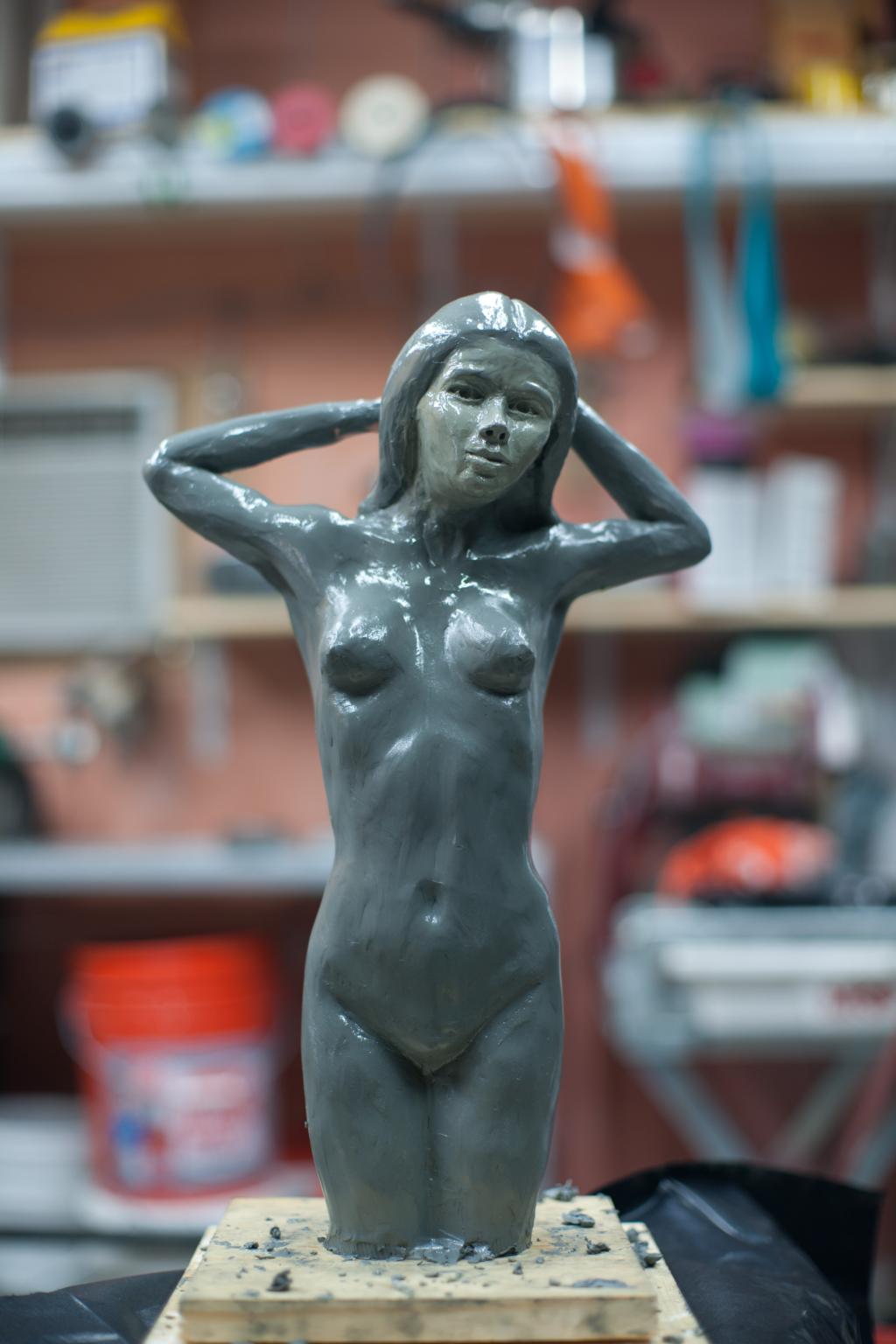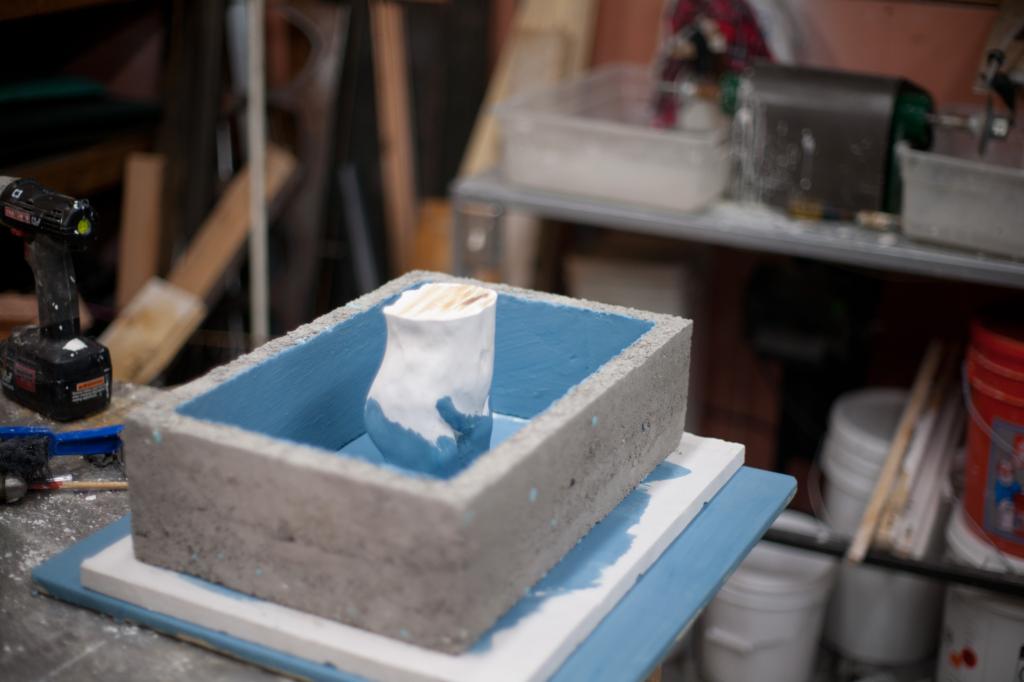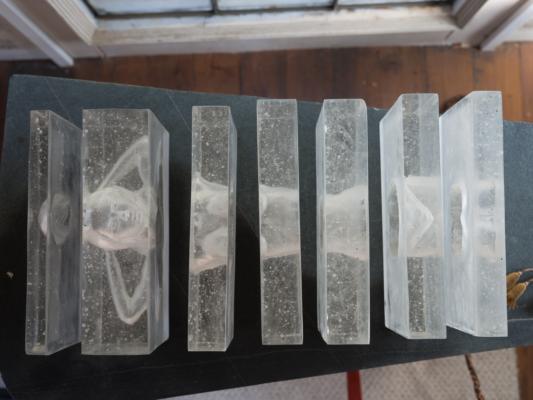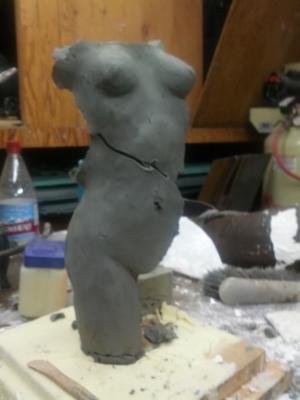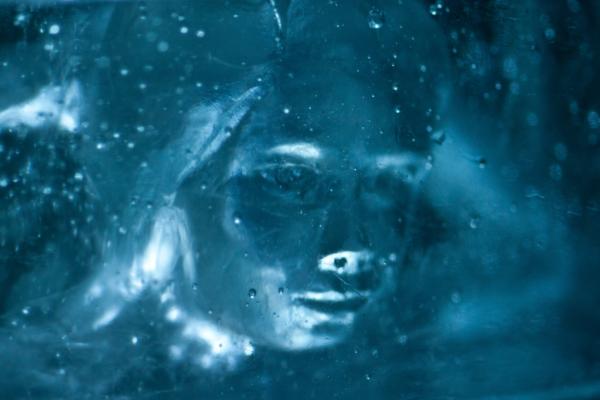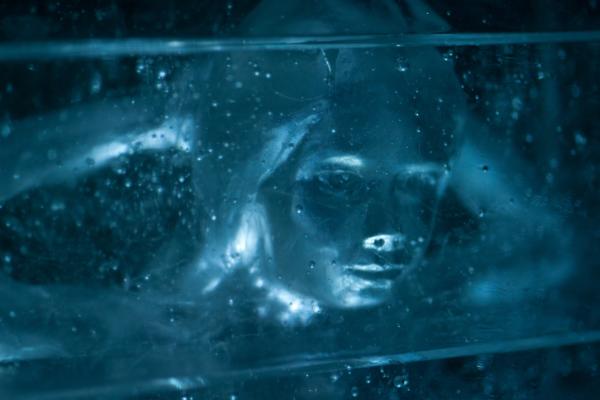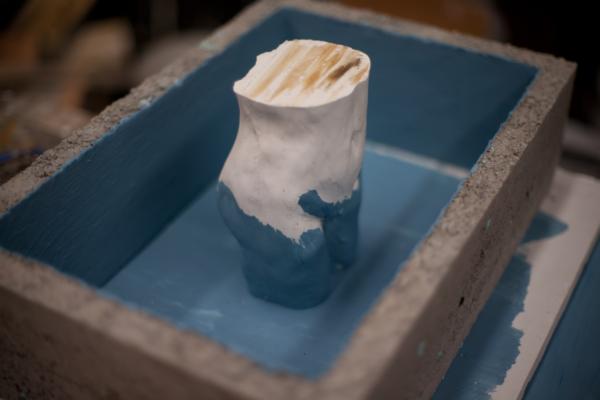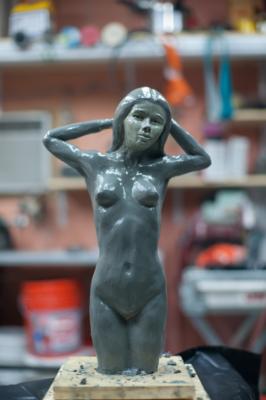Astraea
I had always been fascinated by the image of negative spaces in glass. Unlike opaque materials, glass has the ability to superimpose several images within one space, as the negatives and positives intersect. I wanted to use this effect for a female figure, sliced into multiple pieces, the each of the pieces shifted and offset from the adjacent slices, capturing a fragmented self. The figure itself would be in the negative, so in effect, it doesn’t exist; the only thing that exists is the world around it. This is similar to what we can all feel, both for ourselves, and for others.
For the sculpture itself, I decided to cast it in 12"x18" rectangular slices. I had thought about casting both an external and an internal figure, but the refraction is hard to predict without a lot of effort and calculation, and I wanted the internal figure to be distinct, so I decided on flat external surfaces. The hight of the sculpture is about 18", and the glass weighs about 250lbs.
To get started, I would have to sculpt the figure itself. I used plastilina, but I really have a love-hate relationship with this stuff. It is an oil-based clay, which is great because it doesn’t dry out, and you can continue to reshape it as desired. On the other hand, I don’t think it is as workable as regular clay (water-based), and I felt like I had to fight with it while reshaping. In any case, it worked out moderately well. I could be a better sculptor, but I felt this model would work well enough.
The next step was to construct several plaster duplicates of the clay model. I needed several because I would be cutting out slices to use with each of the glass castings. I built a two-part mold, as described in Cinderella Slippers, and wound up creating five replicas of the clay model in plaster/silica. I sliced these up, and used them for the negative space, as illustrated in the following photo.
The outer mold is constructed from KS-4 refractory cement. This is a durable high temperature cement, which allowed me to use the mold multiple times, for each of the slices cast.
The outer cement mold and the inner plaster/silica figure were coated with kiln wash, to prevent the glass from sticking. Iset it all on a flat slab of plaster silica and used an ordinary 4" steel screw to attach the inner figure. This worked, but it was fairly risky -- by the end of the firing, the steel screw had all but disintegrated, which would release the figure to float in the glass. That would have been terrible, but it never happened.
The firing schedule was pretty intense, taking about 3 months of firing in total. Each slab took 1-2 weeks. The following is a typical firing schedule for a 2.5" slab. The large 4.5" slab in the middle took longer, about 2 weeks, and the thinner 1" slabs took several days. The glass is Bullseye blowingcullet, COE 90. I chose the cheaper cullet due to the price, and I was reasonably happy. However, there is still some veiling, and I believe the casting cullet would have given better results.
| Ramp (F/min) | Temp (F) | Hold (hours) | Total Time (hours) | Start time | Hold start time | End time |
|---|---|---|---|---|---|---|
| 100 | 200 | 6 | 8 | M 2:00 | M 4:00 | M 10:00 |
| 100 | 1200 | 3 | 13 | M 10:00 | M 20:00 | M 23:00 |
| 600 | 1600 | 1 | 2 | M 23:00 | T 0:00 | T 1:00 |
| Full | 900 | 12 | T 4:00 | T 16:00 | ||
| 4 | 800 | 0 | T 16:00 | W 17:00 | ||
| 8 | 700 | 0 | W 17:00 | Th 5:00 | ||
| 26 | 100 | 0 | Th 5:00 | F 4:00 |

